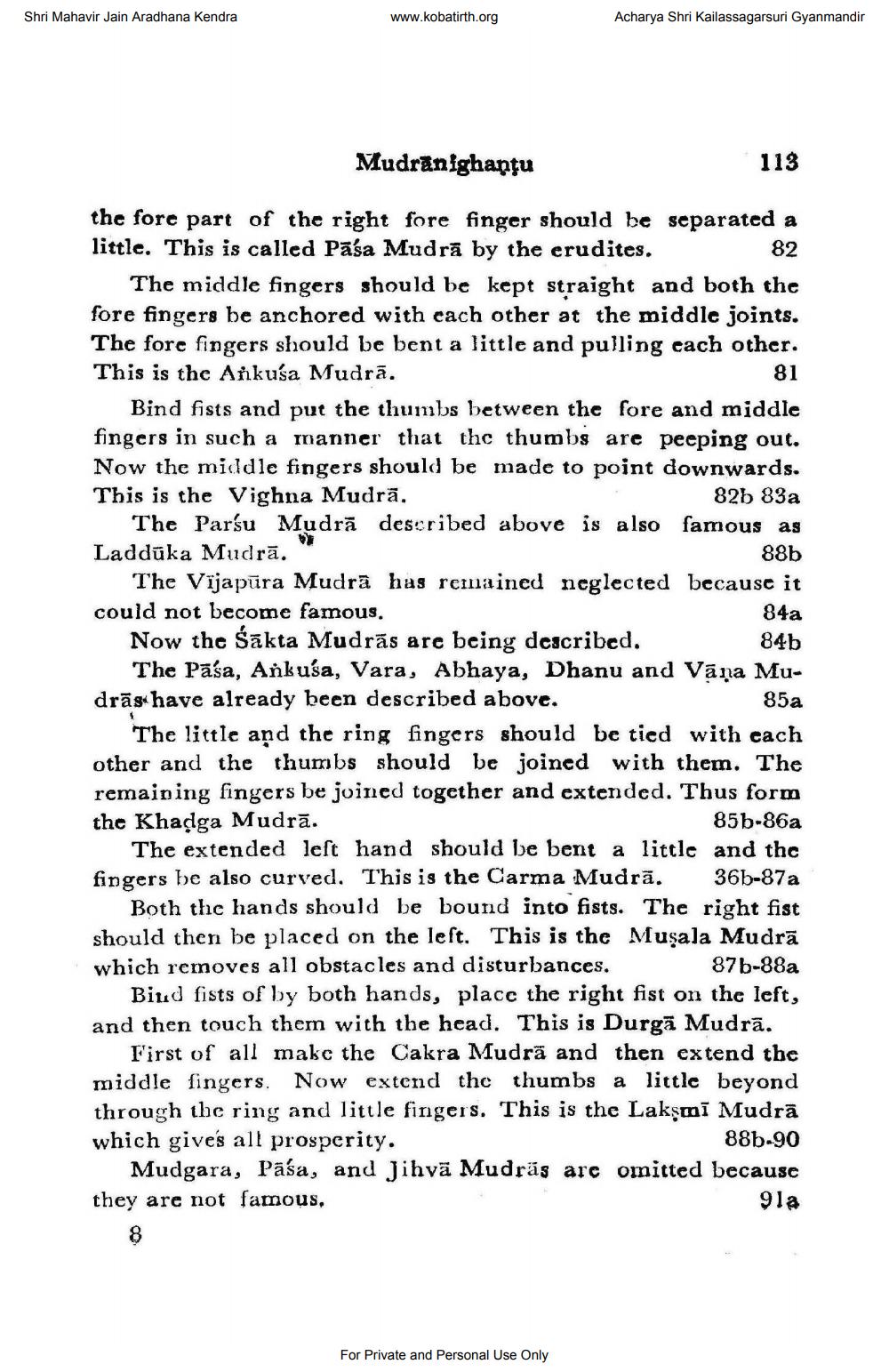________________
Shri Mahavir Jain Aradhana Kendra
www.kobatirth.org
Acharya Shri Kailassagarsuri Gyanmandir
Mudrānighantu
113
84b
the fore part of the right fore finger should be separated a little. This is called Pāśa Mudrā by the erudites.
82 The middle fingers should be kept straight and both the fore fingers be anchored with each other at the middle joints. The fore fingers should be bent a little and pulling each other. This is the Ankusa Mudrā.
81 Bind fists and put the thumbs between the fore and middle fingers in such a manner that the thumbs are peeping out. Now the middle fingers should be made to point downwards. This is the Vighna Mudrā.
82 83a The Parsu Mudrā described above is also famous as Laddūka Mudrā.
88b The Vījapūra Mudrā has remained neglected because it could not become famous.
84a Now the sākta Mudrās are being described.
The Pāša, Ankusa, Vara, Abhaya, Dhanu and Vāna Mudrās have already been described above.
85a The little and the ring fingers should be tied with each other and the thumbs should be joined with them. The remaining fingers be joined together and extended. Thus form the Khadga Mudrā.
85b-86a The extended lest hand should be bent a little and the fingers be also curved. This is the Carma Mudrā. 36b-87a
Both the hands should be bound into fists. The right fist should then be placed on the left. This is the Musala Mudrā which removes all obstacles and disturbances.
87b-88a Biud fists of by both hands, place the right fist on the left, and then touch them with the head. This is Durgā Mudrā.
First of all make the Cakra Mudrä and then extend the middle fingers. Now extend thc thumbs a little beyond through the ring and little fingers. This is the Lakşmī Mudrā which gives all prosperity.
88b-90 Mudgara, Pāśa, and Jihvā Mudrās are omitted because they are not famous,
91a
For Private and Personal Use Only




